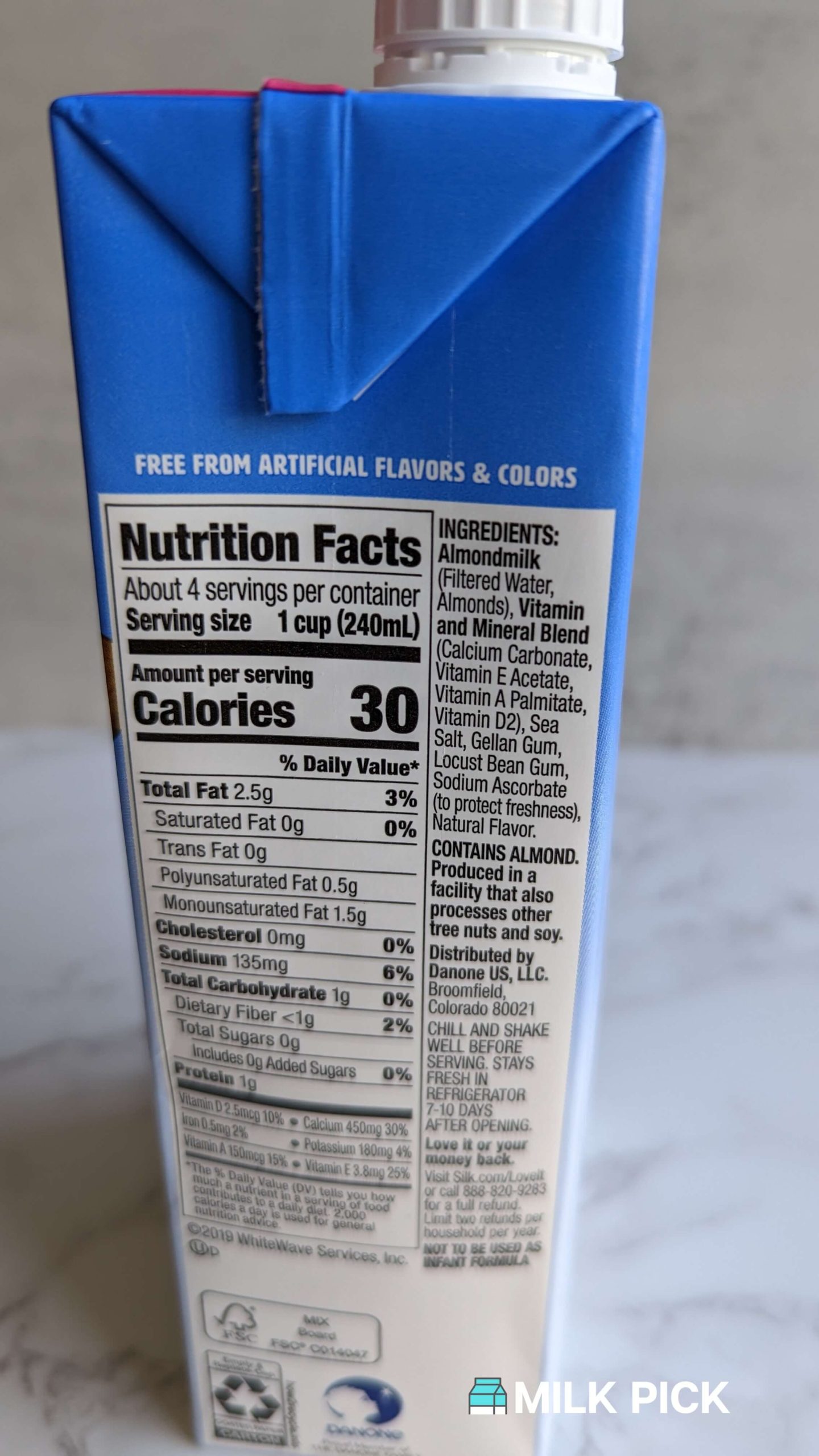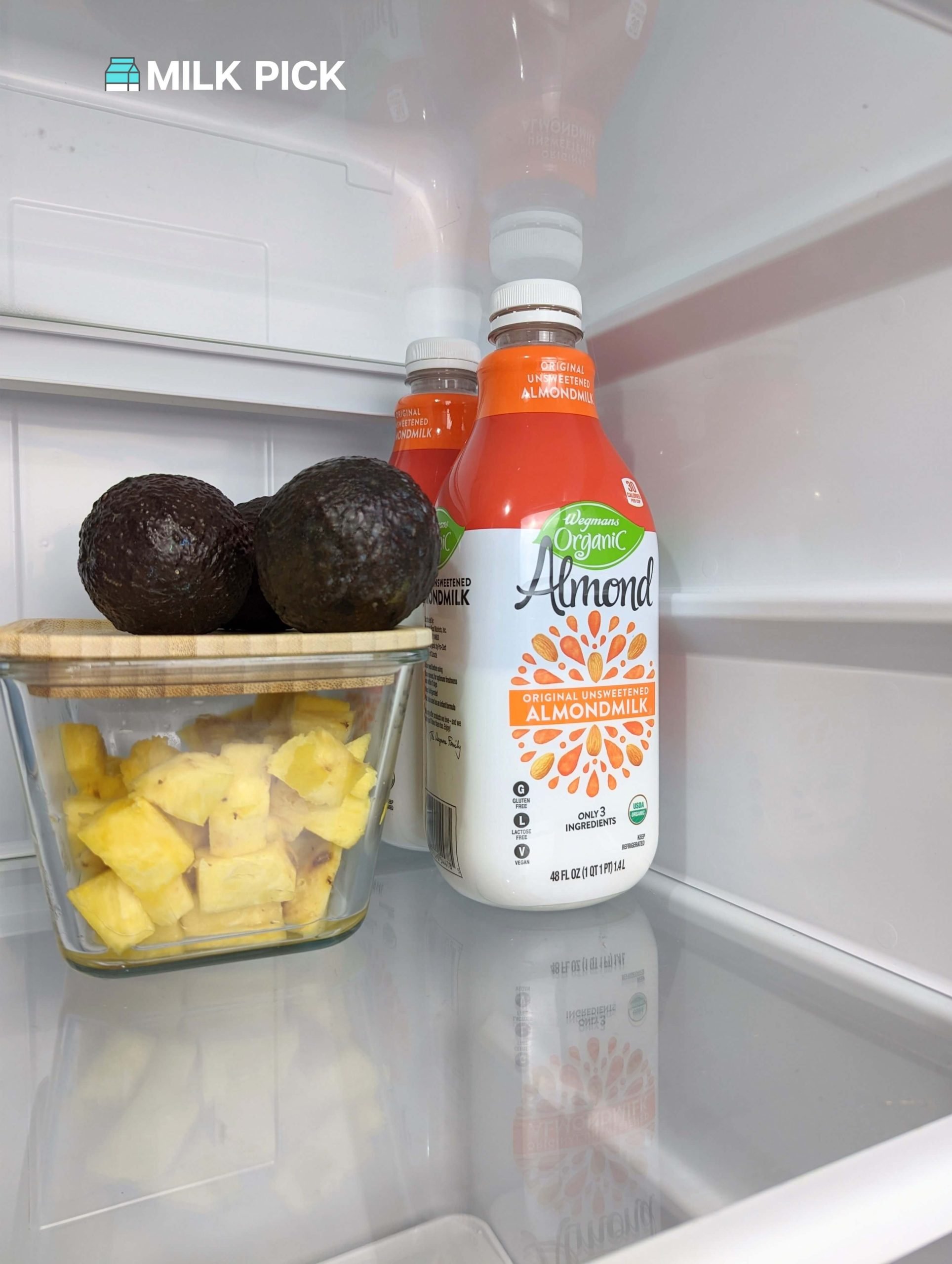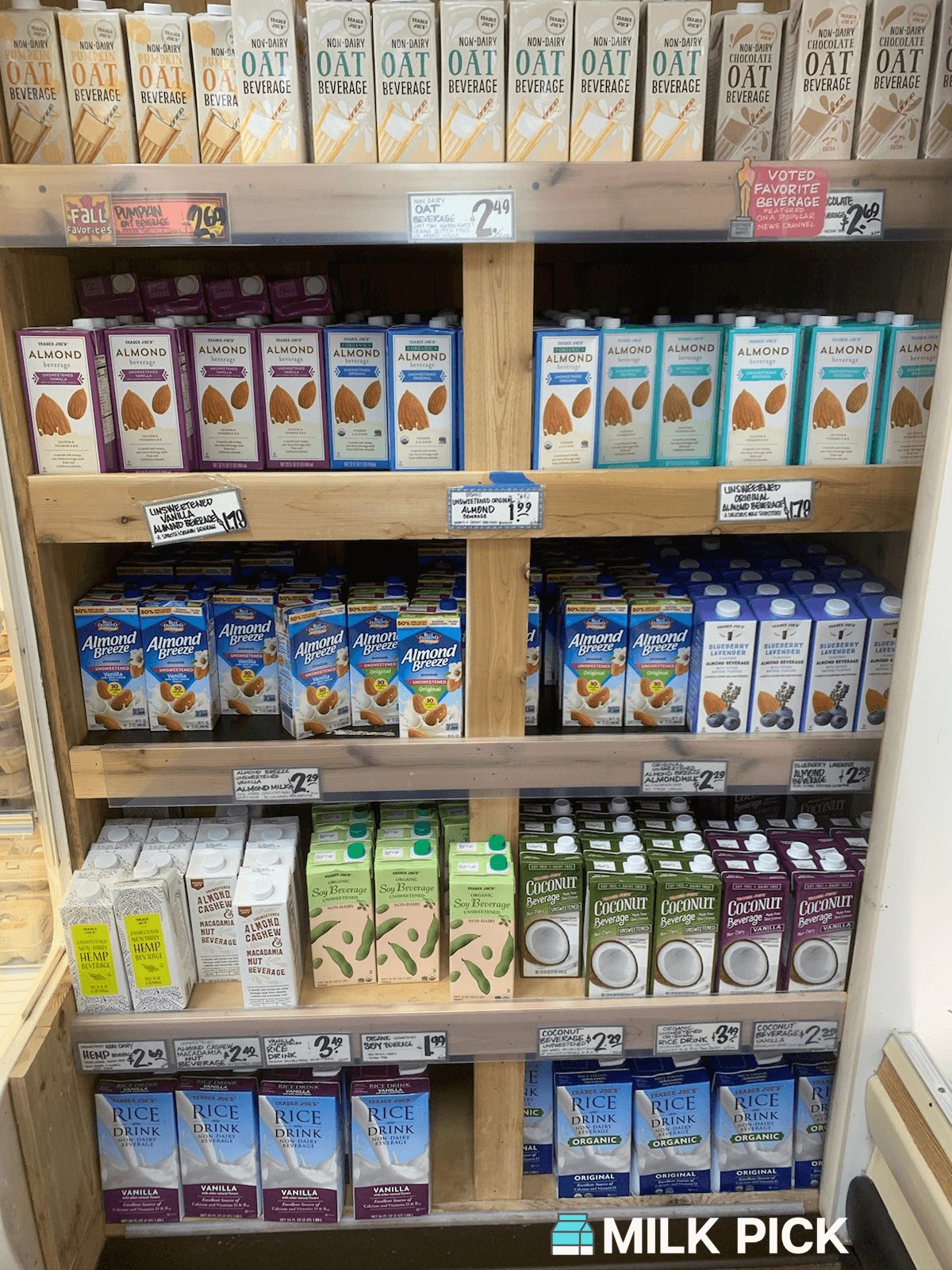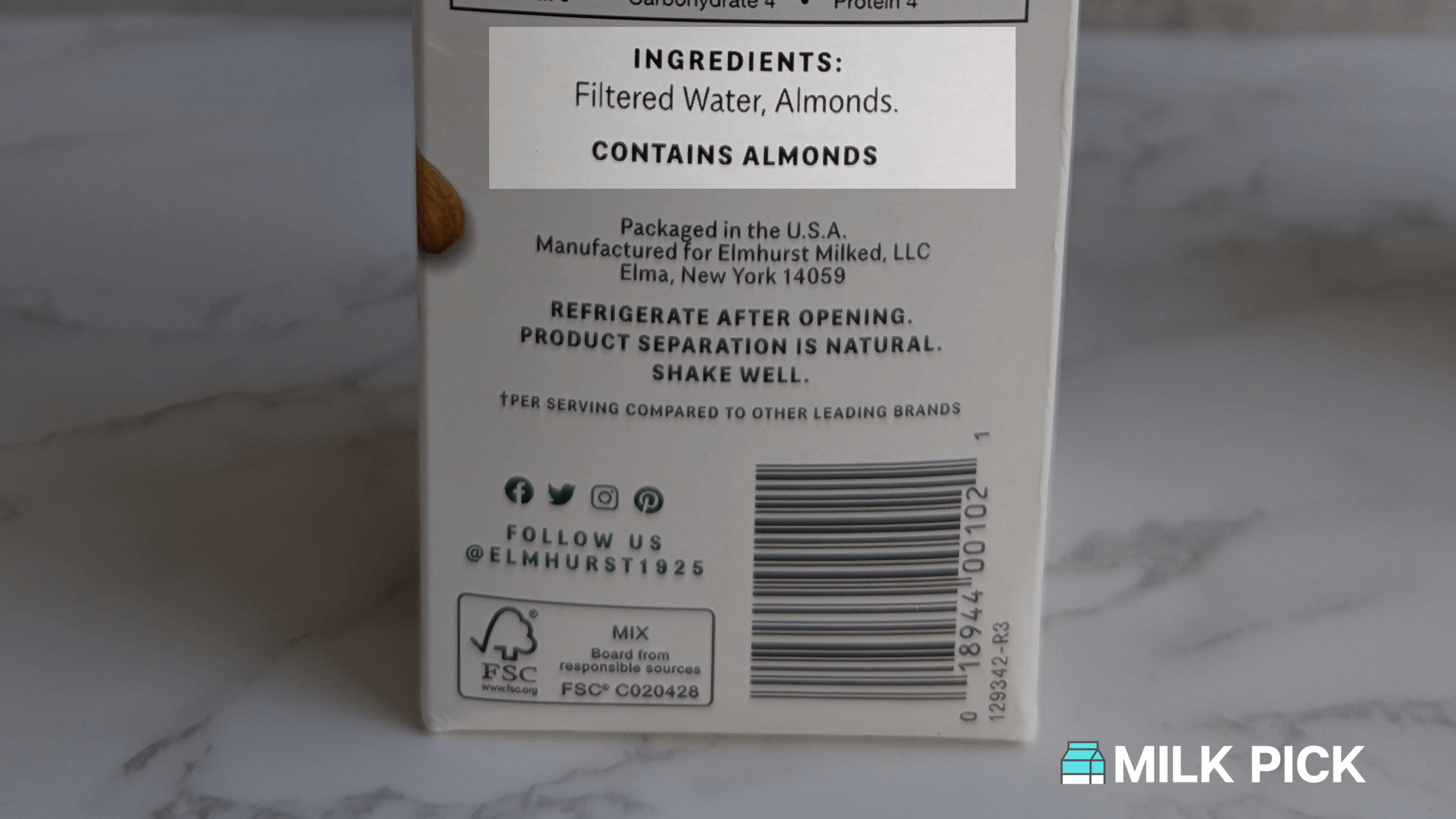Histamines are naturally occurring compounds found in foods and drinks. They play a part in regulating your immune system and removing potential pathogens from your body.
For some people, histamines can cause an allergic reaction, like hives, itching, or trouble breathing.
This is typically in response to the histamines already present in the food or the body over-producing the compounds due to an allergy.
If you drink almond milk and have histamine sensitivity, it's important to know whether the beverage is safe for you to drink.
Keep reading to find out whether or not almond milk is high in histamine, and the best brands for people with histamine sensitivity.
Quick Answer
Is almond milk high in histamine?
Almonds have trace amounts of histamine, which means almond milk is likely very low in histamine.
What are Histamines?
Histamines refer to certain chemicals that are found naturally in the body.
These compounds act as protectors against potential threats to your immune system, including allergens like pet dander, pollen, and dust.
If you have an allergy to something, your body goes through a series of chain reactions in an attempt to protect you from the threat.
When it detects the allergen, your body sends a signal to your mast cells (cells that store histamines), telling them to release histamine compounds.
The histamines arrive at their intended location and connect with special histamine receptors, typically in areas like your nose, lungs, skin, gut, and blood.
This increases blood flow and inflammation, triggering your immune system to try and fix the problem.
Outwardly, this manifests as allergy symptoms like a runny nose, sneezing, watery eyes, or difficulty breathing.
For example, if you're allergic to pollen and breath it in, your body will trigger a histamine response.
This response prompts mucus membranes in your nose to produce mucus to try and get rid of the pollen. In response, you may sneeze or get a runny or stuffy nose.
A second example is when you eat foods you’re allergic to.
For instance, if you have a tree nut allergy and drink almond milk, your body will trigger a histamine response in your gut.
This can result in symptoms such as bloating or diarrhea.
Here's a video from The National Library of Medicine with more information about what histamines are and how they affect your body.
Histamines In Food
Histamines aren’t just produced internally in your body; they can also be present in foods and beverages.
Some foods are naturally higher in histamines, also called biogenic amines, while others have high histamine levels due to fermentation or spoilage.
The following factors impact the histamine content in foods:
Fermentation
Fermented foods, such as cheese, yogurt, kefir, wine, and beer, are naturally high in histamines. Bacteria forms during the fermentation process, resulting in the production of histamines.
Aging or Spoilage
Expired foods or items stored improperly can contain higher levels of histamines due to spoilage.
You may experience a form of food poisoning if you eat spoiled foods that have gone bad and have a high histamine content.
Naturally High Levels
Some fruits and vegetables, like avocados, citrus fruits, strawberries, and tomatoes, are naturally high in histamines.
Shellfish, such as shrimp and crab, are also high in histamines due to bacteria found in their natural habitats.
Food Processing
Due to food processing and preservation, processed and canned foods may contain higher levels of histamines.
Also, smoked and cured meats, such as bacon and ham, contain elevated histamine levels because of the curing process used to preserve the meat.
Is Almond Milk High in Histamine?
Determining whether a product like almond milk is high in histamine or is safe for people with histamine sensitivity can be challenging because there is no straightforward process.
First, there is no FDA requirement for measuring or labeling the histamine content of foods.
This means there’s no real way to tell how much histamine an almond milk product might have.
Second, histamine levels in almond milk (and all foods) vary based on many factors, including manufacturing, storage, and age.
With this in mind, it would be impossible to know how much histamine an almond milk item has, as the levels would vary at any given time.
Despite potential confusion about histamine levels in almond milk, a few factors can help you make an educated guess about potential histamine levels in almond milk products:
What’s Considered a High Histamine Level?
One element to consider is what is an objectively high histamine level?
A 2021 review of low-histamine diets looked at this question to determine what levels of histamines were considered high and low.
The review found that most low-histamine diets aim include foods with between 5 mg and 50mg of histamine (*the study did not indicate whether that was per serving), but that other sources recommended foods only have 1 mg histamine to be included in a low-histamine diet.
Histamine Levels in Almonds
Taking the above into consideration, it's helpful to look at the recorded histamine levels in almonds to determine how much histamine might be in almond milk.
The same 2021 review indicated that “nuts” had around 2 mg histamine.
A 2018 review on biogenic amines in plant-based foods looked at nine samples of almonds and found undetectable levels of histamine (although other biogenic amines were present).
Because almond milk is made of almonds and water, the almost non-existent histamine levels of almonds indicate that almond milk is likely low in histamines as a fresh, unopened product.
Other Ingredients In Almond Milk
While fresh, organic almond milk may be low in histamines, many commercial brands have added ingredients.

Silk almond milk ingredients
These additives may trigger a histamine reaction in those who are sensitive to the compounds.
For example, carrageenan is sometimes used as a thickener for alternative milk products and has been shown to cause irritation and inflammation.
At least one study found that the H4 histamine receptors in rats played a part in acute inflammation, indicating that people with histamine sensitivity should avoid extra ingredients like this in almond milk products.
Almond Milk Processing and Spoilage
The histamine content of a product increases as it ages and starts to spoil.
Although fresh, unopened almond milk may be low in histamine, that same product may produce more histamines if it’s not stored properly or sits too long in the fridge.
Homemade or store-bought refrigerated almond milk should be kept in the fridge for about 3 to 5 days or 7 to 10 days, respectively, after it's opened.

Shelf-stable almond milk can be stored in a cool, dry place until its expiration date, but once opened should also be kept in the fridge for about 7 to 10 days.

After this time, you may notice the almond milk becoming clumpy, smelling funny, or tasting sour. If so, to throw it out.
If your almond milk still seems okay, but it’s past these general guidelines for preventing spoilage, you can choose to drink it; however, the spoilage process may cause higher histamine levels and induce a reaction if you have a sensitivity.
Can Almond Milk Trigger Histamine Reactions?
Yes, almond milk can trigger a histamine reaction, especially if you have histamine sensitivity, also called histamine intolerance.
If you have histamine sensitivity, your body cannot metabolize, or break down, histamines, which causes a buildup of these compounds. This initiates a response from your immune system, resulting in allergy-like symptoms, including:
- Hives
- Itching
- Headache
- Abdominal pain
- Rash
- Fatigue
- Nausea
- Breathing problems
- Digestive issues
Because it’s difficult to determine the exact levels of histamine in every almond milk option available, you may want to work with a dietitian to find a product that works for your body.
For example, you may be able to find a brand that is especially low in histamine or make your own almond milk and store it in a way that minimizes histamine production.
Are Certain Almond Milk Brands Lower in Histamine Than Others?
While there are no official certifications for histamine levels in almond milk, research on histamines in food indicates that the best option would be homemade almond milk or a fresh, organic product that doesn’t contain additives.
The following almond milk products are likely low in histamine and would make an excellent choice if you have a histamine sensitivity:
- Malk Almond Milk - contains water, organic almonds, and Himalayan salt
- New Barn Organics - only contains sea salt, water, and organic almonds
- Three Trees Almond Milk - contains water and organic almonds
- Elmhurst 1925 Almond Milk - almonds and water
- Berber Almond Milk - organic almonds and water
- JOI Almond Milk Base - blanched almonds

Elmhurst 1925 almond milk ingredients
Bottom Line On Almond Milk and Histamines
If you are sensitive to histamines, evaluating the histamine levels in your food is important to your well-being.
While almond milk is generally one of the best plant-based milk options for a low-histamine diet, it may trigger a reaction if you have histamine intolerance.
The most effective ways to avoid a potential histamine reaction are to choose an additive-free almond milk and store it properly to keep the histamine levels low.
Work with a nutritionist or dietician who can help you understand how different brands affect your histamine sensitivity so you can find the one that works for your body.
